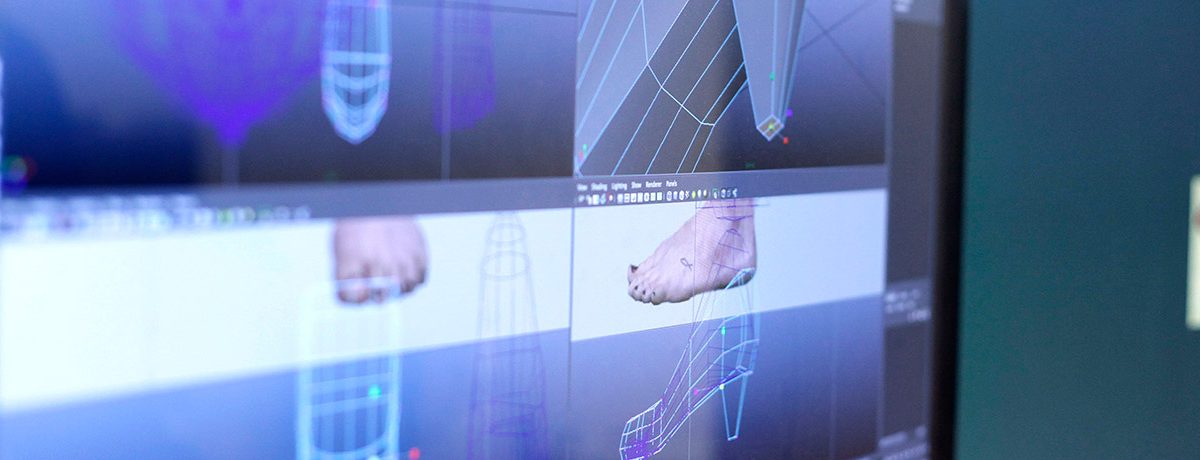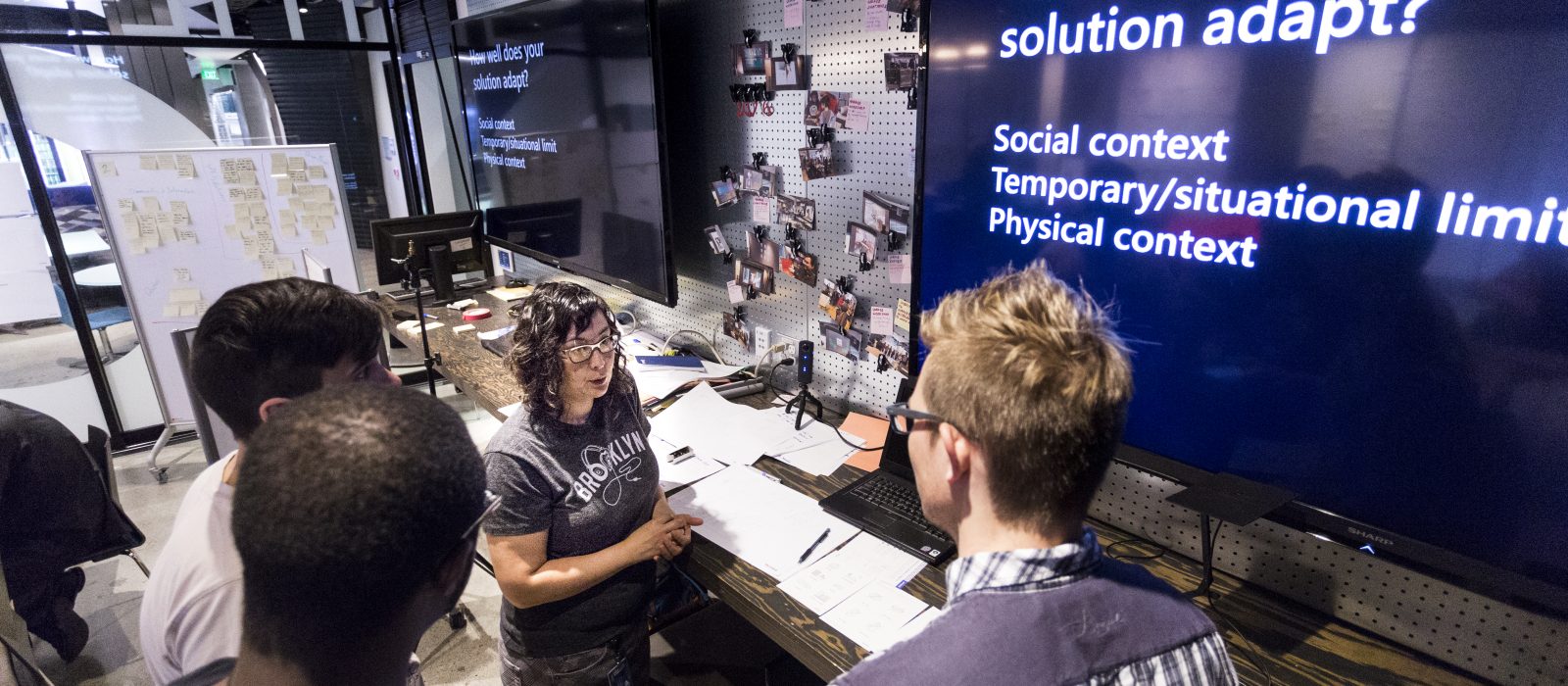Designing gaming for everyone

Consider closed captioning. Originally created for people with hearing loss, it is now used by all sorts of people to consume video in shared environments. Think about the TV with closed captioning at the gym or watching a social media video with a friend while at a crowded bar.
This solution for one type of ability improved everyone’s options across a variety of environments. And if necessity is the mother of invention, then intentionally designing for people with diverse needs and abilities is what nurtures ongoing innovation.
Known as “inclusive design,” this is no simple feel-good approach to experience design. The telephone was the result of work with people with hearing impairment. The typewriter was conceived to help people who are blind to write letters. And the earliest email protocols were used for remote communication with people with deafness.
“Xbox is embracing inclusive design as part of our Gaming for Everyone effort,” said Phil Spencer, head of Xbox. “In this ongoing initiative, every single person on Team Xbox is working together to try to make gaming accessible, equitable and sustainable for all.”
Take, for example, the challenge of the broken Xbox headset.
An Xbox employee realized that his broken headset prevented him from joining in his beloved Xbox social gaming features. He got to thinking about people with hearing loss and people who are non-verbal, and he became aware of the challenges they face in these collaborative aspects of gaming. In some cases, people are unable to participate at all. There was a need to be filled.
Katy Jo Wright, a senior program manager at Xbox who is passionate about making Xbox a place everyone can enjoy, heard about the challenge and worked with Team Xbox to set up a five-day Social Gaming Sprint as part of the Gaming for Everyone effort.
Xbox brought in Kris Woolery, a senior design strategist who leads inclusive design projects across Microsoft, to run the sprint. Woolery describes the goal of the sprint as “building empathy so people look beyond their own experiences and create solutions that are more adaptable to individual people.” In each sprint, she aims to construct an environment for people to learn in a way that is practical to their lives, all with the goal of raising consciousness.
The Xbox Social Gaming Sprint started by bringing together designers, researchers, writers and program managers from different areas of Xbox in a room packed with sticky notes, colored pens, white boards and boxed lunches.
“We asked ourselves some big questions,” said Wright. “What is a gamer? Who is a gamer? A big part of Gaming for Everyone is enabling all types of gamers to play as they want, in the way they want. We need to challenge all of our perceptions.”
The first day, attendees interacted with and interviewed subject matter experts including ASL interpreters, people who love gaming and have varying degrees of hearing loss or verbal abilities, a doctor who studies the inner ear and the father of an adolescent gamer who has autism and is non-verbal.
Bryce Johnson, an interaction designer at Xbox, and J.R. Reyes, a visual designer for the Xbox console, both attended the sprint. Reyes said, “The meta of it was there are more challenges than just hearing and speaking – it’s really about communication at every level.”
On day two, Woolery had the group take their insights from their subject matter expert interviews and reflect on the context of and the capabilities needed for multiplayer games. They considered questions like “Who is excluded? Think about the different components of multiplayer games as ‘micro interactions’ of an experience to evaluate.”
Their main notes from the subject matter experts were written on sticky notes. All notes went on the whiteboards and the group made meaning from them: searching out patterns, themes, motivations, mismatches, similarities and differences. The mismatches were clustered and evaluated for opportunities. Participants then generated ideas from these opportunities, which they turned into storyboards of potential interactions that could improve the experience for a spectrum of gamers.
“Once we started investigating the ideas,” Johnson said, “we went wider in our research, and soon we were trying to go as wide as we could go.”
On the following days, the group used their research and storyboarding to create prototypes of solutions and present them to the sprint participants.
“You are not designing one thing for all people,” said Woolery. “You’re designing a diversity of things so everyone finds a way to participate and a sense of belonging.”
Not all of the solutions were achieved via a straight path. “We considered closed-captioning options for people with deafness but had to remember that they are fluent in different forms of sign language, first and foremost,” Johnson recalled.

Microsoft. Work gaming group.
One of the proposed solutions was an emoji keyboard that identifies details about gamers or helps them to express themselves in a universal manner. From emojis of a gamer in a wheelchair to those showing that a gamer has hearing impairment, the symbols support people to navigate social gaming or create their own social gaming groups that share similar abilities or preferences. But the keyboard has the potential to help all gamers to better communicate.
“An inclusive design approach encourages us to understand the needs of a lot of people and think about them intentionally,” said Johnson. “We want everything in Xbox to be as fluid and accessible as possible. It’s not about simplifying the games but improving and tailoring to specific needs.”
Reyes said, “I gained a lot from the sprint, and it is a good reminder to all that we are not the end user. Designers can get lost thinking ‘this is what I would do in this situation.’ But we are biased and need to always open ourselves to other perspectives in order to do our best work.”
Inclusive design uses the World Health Organization’s definition of disability as a mismatch between the features of a person’s body and the features of the environment in which they live. Anyone can experience disability, depending on their abilities or context. This shift in perspective helps people reconsider disability as a mainstream opportunity, rather than a marginal issue.
Woolery was pleased with a successful sprint and the solutions including the possibility of the emoji keyboard. Looking forward, she noted, “We are actively expanding inclusive design beyond product teams to impact many areas of Microsoft. Our hope is to build a broad community of people who are passionate experts in making inclusive experiences for all of our customers.”
